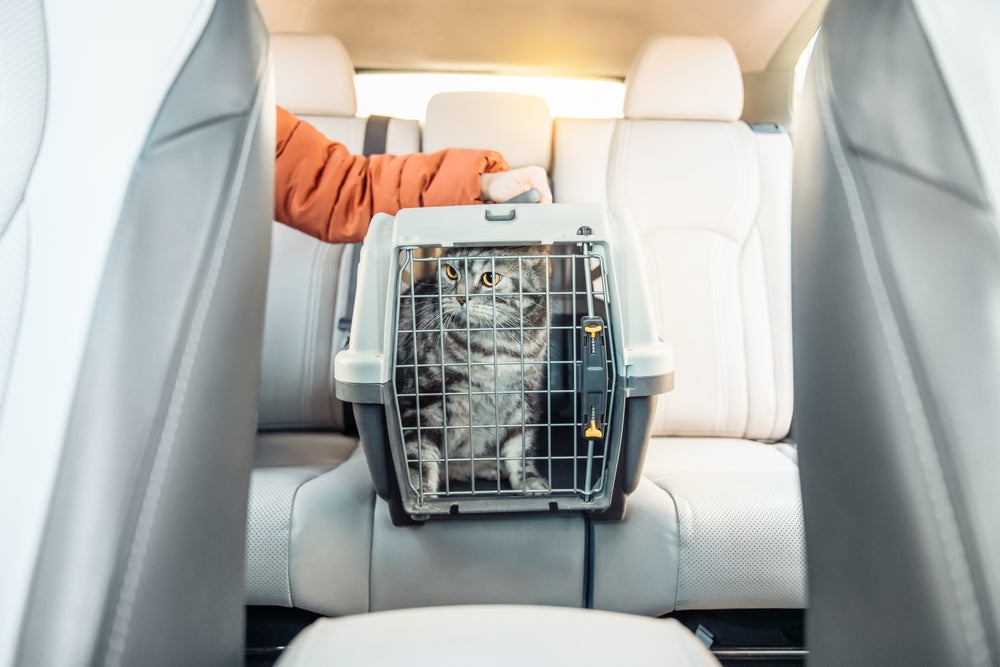Oftentimes, people assume cats are not trainable. Leave the tricks to the dogs! Did you know, though, that cats are totally capable of being trained? This is a common misperception – let’s discuss how to train your cat!
Training 101
Let’s start with the absolute basics. It might sound obvious, but you will need treats. The cat in question needs to feel rewarded! However, it is important to make sure you don’t overfeed your cat as being overweight is a common problem for felines.
In order to avoid overindulgence with your treats, here are some ideas. Make sure you think of the size of the treat in cat terms. You may be used to thinking about the size of treat you would give a dog or even a baby, but dogs are generally much bigger.
Maybe try out cat treats that can easily be broken into little pieces or the wet treats that come in tubes. Freeze-dried treats can be easy to break. In addition to traditional cat treats, you can try bites of tuna or shrimp! Ultimately, it is crucial your cat really wants whatever the treat is.

Start Slow
Cats can be quite picky with how they spend their time. If just starting out, it is a good idea to cap any training at five minute increments. Consider taking breaks – look for positive signs like purring to gauge your cat’s enjoyment during these breaks.
If your kitty friend bails, consider moving on and trying again later. These stubborn creatures will not respond well to doing things against their will! Make sure you provide a treat (positive reinforcement) upon success. It is always a good idea to break down your training into different, manageable steps.
Reinforcement vs Punishment
Let’s discuss reinforcements vs punishments. To start, check out this awesome graphic from Cat Behavior Solutions:

As you can see, positive punishment is the addition of something unpleasant. For cats, a common form of positive punishment is using a spray bottle upon misbehavior. This can be problematic though, as this may negatively impact your relationship with your feline.
Cats are more likely to have behavior problems when punishment is used. Furthermore, this can lead to a strained relationship as your cat may view you as a punisher. Instead of providing punishment, consider positive reinforcement instead.
For example, if you don’t want your cat on the counter, instead of spraying them with water, consider providing them an alternative space like a cat tree. Providing them treats instead when they jump on the cat treat is an example of positive reinforcement. This is far more likely to result in desired and lasting changes in behavior!
Ways to Train Your Cat
If your cat already does something you want to reinforce, you can naturally try to capture that behavior. You can do so by providing a treat when their behavior happens naturally.
For instance, if you like when your cat sits or lays in your lap (the behavior), you can provide the cue, for instance, “come” or “lay down,” after they curl up on their own accord. After you provide the cue, provide the positive reinforcement (some kind of treat).
Another way to train your cat is a tactic called “luring.” This is where you lure the cat into the desired position or behavior with a treat. Check out this example from The British Psychological Society: How to train a cat:
“If you want to get your cat to sit, you can put a treat in front of their nose and lift the treat up and back. As the cat's head follows the treat, their butt will go down and they will sit. (You have to keep the treat close to their nose, because if it's too far away, they will probably stand on their hind legs instead to reach it.)”
Training Your Cat to Like Their Crate
Here is a feline training you could probably use: getting your cat into their crate! Our kitty friends usually associate their crate with the vet – not only is their crate a small place that feels foreign, but it also transports them to a place they do not like!
Try getting your cat more comfortable with their crate by providing treats when they get in. Much like you might train a dog to go into their crate upon a command, your cat can learn this too!
“You need to have a one-to-one relationship in which the cat carrier always predicts the treats; if you get it out without offering the tuna, you will be undoing your training. And finally, you need to use really great treats.”
This quote is from The British Psychological Society: How to train a cat. This resource informs previously mentioned psychological insight – I would highly recommend checking it out if you want to dive deeper into the subject of cat training.

In Closing…
Don’t be fooled! Cats are smart and capable beings! Their stubbornness can make them a challenge to train, though. With your new knowledge on positive reinforcement (and the argument against punishment), try working on some new tricks with your feline – you might be surprised what they are capable of!




